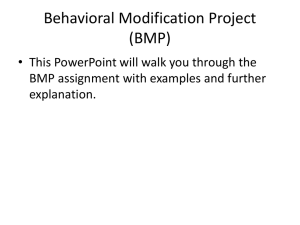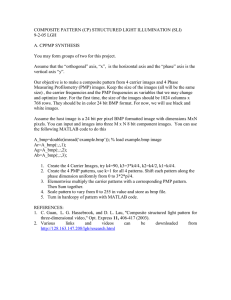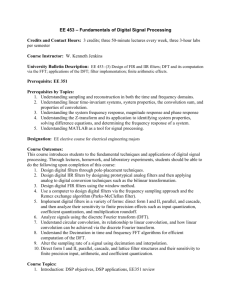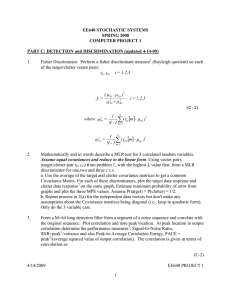EE630 PROJECT D SNAKE DETECTION USING FIR AND IIR FILTERS by LGH 12-10-14
advertisement
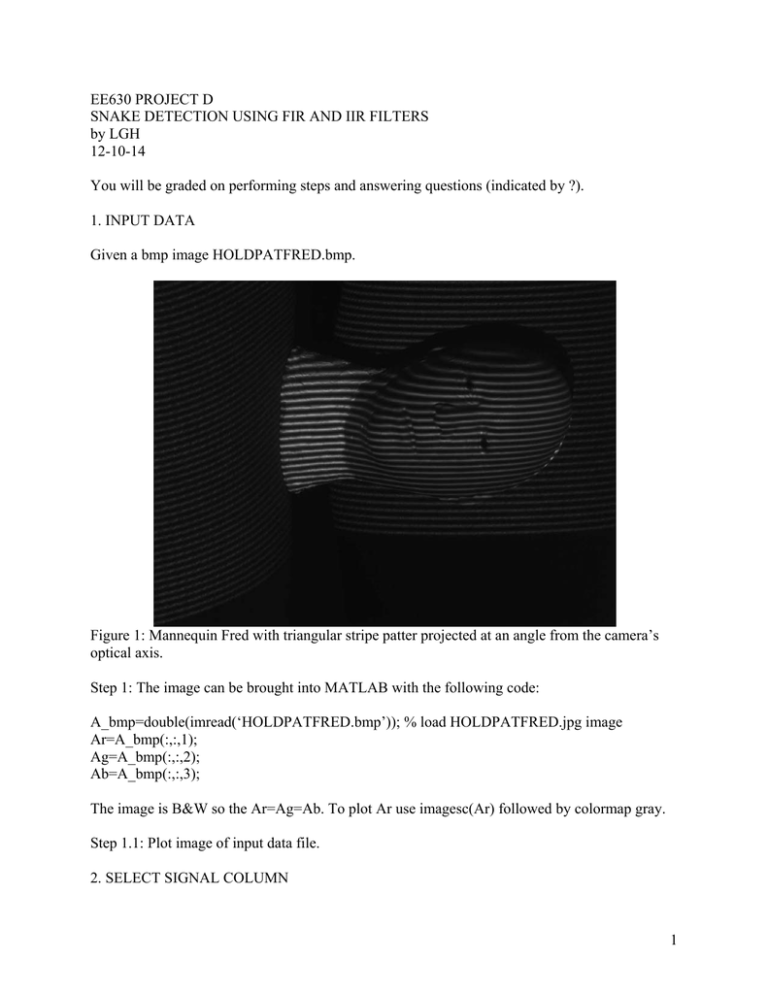
EE630 PROJECT D SNAKE DETECTION USING FIR AND IIR FILTERS by LGH 12-10-14 You will be graded on performing steps and answering questions (indicated by ?). 1. INPUT DATA Given a bmp image HOLDPATFRED.bmp. Figure 1: Mannequin Fred with triangular stripe patter projected at an angle from the camera’s optical axis. Step 1: The image can be brought into MATLAB with the following code: A_bmp=double(imread(‘HOLDPATFRED.bmp’)); % load HOLDPATFRED.jpg image Ar=A_bmp(:,:,1); Ag=A_bmp(:,:,2); Ab=A_bmp(:,:,3); The image is B&W so the Ar=Ag=Ab. To plot Ar use imagesc(Ar) followed by colormap gray. Step 1.1: Plot image of input data file. 2. SELECT SIGNAL COLUMN 1 Step 2.1: Select and plot, the nx column to represent a signal. Indicate which nx you used. The size of the image is [My Nx]=size(Ar); A 1-D vector would be My by 1. sc=Ar(1:My,nx); Figure 2: The middle column intensity of Fig. 1. Step 2.2 DFT the 1-D signal and isolate the sine wave region. That is, determine the boundaries of the region/s in the DFT domain that you believe represent the energy contribution of the sine wave projection. Plot the magnitude DFT spectrum (you may suppress dc). Indicate your boundary regions which you will be designing filters for in section 3. 3. DISCRETE TIME FILTER DESIGN For all designs use the 1-D data in section 2 as input. Show results for each filter design in both time and frequency domains. Remember to design a lowpass and then frequency translate it to be a band pass filter. 3.1 Design an IIR using impulse invariance of a butterworth filter. Define your specifications and show design process of butterworth and why you chose the specific order N? 3.2 Design an FIR using the Kaiser window. Optimize to most closely match the spectral shape found in step 2.2. 3.3 Design an FIR using “frequency sampling approximation” of spectral region in step 2.2. What I mean by this is take the magnitude of the spectrum that represents the striping contribution and use it as a discrete time filter. Just window or section this region out and inverse DFT it to get the discrete-time impulse response or just use as is in the frequency domain. 2 3.4 Choose one of the filter designs and implement on entire 2-D image. Show results in both space and frequency domains. Take log of frequency domain to better visualize the response. 3

